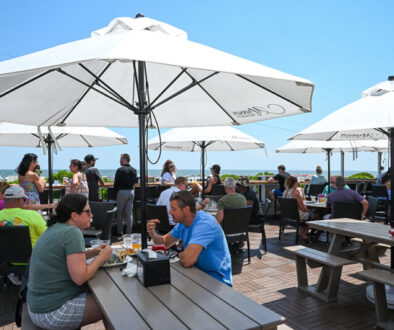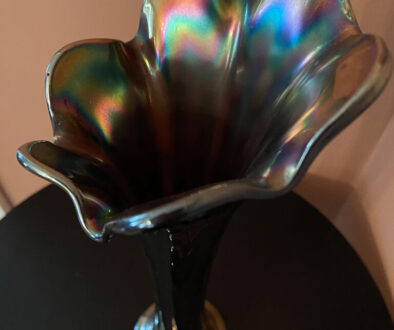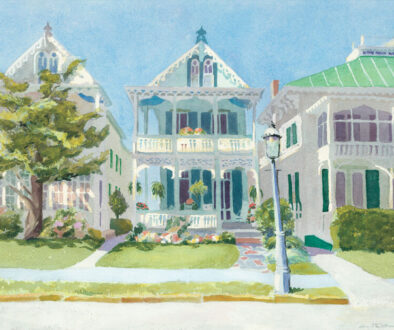How Victorians Celebrated July 4
Beginning on Decoration Day and ending on Labor Day, everyone in Victorian America in the late 1800s held picnics. It was summertime, and getting outside, spreading a cloth or blanket, and enjoying the fresh air, fresh food, and sunshine was good for the mind and body. Family and group picnics were held both at home and away from home — at municipal parks, fairgrounds, or along rural roads, says Thomas J. Schelereth, in Victorian America: Transformations in Everyday Life.

The high point for the picnic season in every town and city across the nation was the grand Fourth of July celebration, which made the most exciting backdrop for this Victorian summer tradition. For Victorians, picnics on the Fourth of July, like today’s backyard barbecues, were a way to celebrate the nation, have fun, and enjoy time with friends and family. A Fourth of July picnic, especially, was an occasion for dressing up. Women might don a stylish lingerie dress. Men often dressed in a coat and tie. According to Schelereth, on July 4 in the late 1800s, “picnics are going off in every direction — quiet little church picnics, Sunday school picnics, working people’s picnics, Fenian picnics, picnics of a hundred societies and associations.”
Besides picnics for the Fourth of July, there were speeches, flags raised, parades, seaside holidays, balls, visitors and relatives from out of town, and, of course, fireworks. Everyone was expected to be at his or her best for the celebration of American Independence, and the holiday meant many businesses were closed. The Vineland Evening Journal from July 3, 1891 notes that “no paper will be issued from this office to-morrow,” and asks, “Will you help make the celebration a success to-morrow?” and urges, “Now that the glorious Fourth comes tomorrow let’s all do their best to entertain visitors and let everybody try to make their properties look well and thus make the town show off to the best advantage.”
Cape May’s Fourth of July celebration of 1893 was extraordinary. President Benjamin Harrison had come to spend time in Cape May and stay in Cape May Point, relaxing and enjoying the seaside, and he was scheduled to be the honored guest for Cape May’s Fourth of July ceremonies. The Sunday, July 9, 1893, issue of The World newspaper in New York printed an elaborate feature on his seaside visit, focusing the nation’s interest on his health and transition from president to private citizen. Harrison had just been defeated in his presidential run for a second term against Grover Cleveland.
He only arrived here on Saturday, last, but he has been in the thickest of things from that moment. He was the lion of the Cape May Independence Day celebration. He made a Fourth of July speech and a good one, for few men are so happy as he at short speeches. He was cheered lustily by the crowd, and showed that he liked it, and in the evening, he was conspicuous in the ball-room festivities at the Stockton House.
Since the Fourth he has been leading a brisk out-of-door seashore life, with a tendency to mingle with the masses, which clearly indicates that he has no notion of interpreting the ex, which now goes before his title of President, as having anything to do with extinguished.
The story comically describes—and illustrates—the president’s ocean bathing routines.
Mr. Harrison would never do much as a long-distance swimmer but he accumulated a good deal of the material that floats during his four years in the White House, and floating on his back with the waves breaking in a miniature surf around the shores of the circular little island-formed stomach, is one of this favorite aquatic diversions.

Only two years prior, on July 4, 1891, Harrison had had a terribly busy Fourth of July as President, again while staying at Cape May Point, said Cape May MAC Curator Ben Ridings, relating a report from the New York Times:
President Harrison’s Fourth was scarcely a holiday. In the morning, he walked up the beach with his grandchildren. Postmaster General Wanamaker reached Cape May Point at 11:30 o’clock on the express from Philadelphia. He called early upon the President and spent the afternoon with him in earnest work upon Post Office matters. After business had been disposed of Mr. Harrison took another long walk with Mrs. Dimmick.
By the evening of July 4, 1891, however, President Harrison and his family would find time to celebrate the Fourth in Cape May, as they reportedly had some fireworks that evening.
Notably, Ridings said, the president and family members also were able to view another fireworks display, this time from atop the 199 steps of the Cape May Lighthouse, just like a handful of people can do each year, today, via Cape May MAC’s annual two-evening Lighthouse & Fireworks event.
“The President’s family had some fireworks during the evening and were further entertained by a similar display from atop the Cape May Point Lighthouse,” TheWorld reported.
Anyone who has climbed the Cape May Lighthouse, or who will climb, anytime, can now rightfully say they’ve followed in the footsteps of a president.



